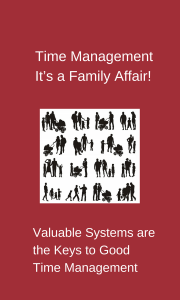If you are reading this article, it is because you were enticed by the prospect of learning how to stop procrastinating.
Like many people I work with, you’ve tried seemly everything under the sun to follow through, but to little avail. So, at this point, you may assume that, left to your own devices, you are going to continue this way.
And what you really need is someone to watch over you to make sure you follow through, right? If this is what you are thinking, I think you are wrong, sort of…
Sure, accountability can be an important piece of the puzzle in addressing procrastination. But, when it comes right down to it, adults with ADHD usually don’t want someone standing over them, telling them what to do.
Rather, the key to managing your procrastination is figuring out creative solutions to address the reasons you procrastinate in the first place.
Read on to find out how to counter your particular flavor of procrastination.
Oh, and please remember, procrastination is a really hard nut to crack, especially for Adults with ADHD. You can do it. Just don’t forget to be compassionate with yourself along the way.
Procrastination Fix #1 – Identify Where You Procrastinate
Right now, when you avoid a task, you may pause for a second. And then not give it another thought, at least for a while. Rather, you steer clear of it by getting lost in something else, anything else — another work task, the internet, organizing, etc.
Until the proverbial sh** hits the fan…
Then you knock your head against the wall, figuratively speaking of course, and scream internally, “Why do I do this?!” At this point, you may continue to avoid the task or you may get lost in addressing the fire drill of the moment caused by your procrastination.
While this scenario plays itself out again and again, I know you know this avoidance response isn’t helpful.
But think about it. If you have little clue as to why you are procrastinating on a task and even less of a clue as to what to do about it, it totally makes sense that you are sidestepping it.
Ready to learn how to respond differently?
List the tasks you are avoiding and then read on…
Procrastination Fix #2 – Clear the Decks
The next step is to decide whether all of the tasks on your active task list really belong there. Your immediate response may be, “I’ve already decided. After all, why would I put a task on my list, if I didn’t need to do it?”
Ok, got it. But, if your list is similar to many others I’ve seen, it may function more as a wish list. Because, given your current capacity, you can’t possibly do it all.
So, while you continue to put off tasks you really have no intention of doing, they stay on your list, hanging on for dear life. And you continue to beat yourself up for procrastinating.
But I know, even if you are willing to consider trimming your list, you don’t want to forget your ideas. Because, well, you might want to do them — someday.
Creating a Maybe/Someday List to store projects you’re not ready to kick to the curb forever is a great solution.
Here are a few suggested guidelines to get you started:
- Have one for personal projects and one for business/professional projects.
- Review them monthly to decide if you are ready to take action on any of your ideas.
- Continue to add any task that comes to mind, but just is not ready for prime time — research fish keeping, start to video blog, organize attic, etc.
- Delete those you decide you really aren’t going to do in the foreseeable future — make own dog food, take pilot lessons, etc.
One of the advantages of maintaining a Maybe/Someday List is you have made a decision not to do a task and are no longer procrastinating. Then you can stop heaping shame and blame on yourself for not doing what you said you would do!
Nice, right?
Procrastination Fix #3 – Address Your Emotions
None of the typical solutions — breaking down your tasks, scheduling them, avoiding distractions, etc. — will help you manage your procrastination until you address the emotions that may be keeping you stuck.
So, that is the next step.
If you are a run of the mill procrastinator, like the rest of us, at some point your emotions— fear of failure, fear of success and resentment — will be the cause of your procrastination.
And, since your thinking is driving your emotions, you can start to manage them by practicing positive self-talk, such as:
- “I might make mistakes, but that does not make me a failure.”
- “Even if the worst happens, I’ll be ok.”
- “This is going to be really uncomfortable, but I don’t want that to stop me.”
But, if you really want to address the emotions that contribute to your procrastination, you will need to dig in a little deeper. Start by checking out ADHD and Avoiding Negative Thinking Traps – Part 1 and ADHD and Avoiding Negative Thinking Traps – Part 2.
If, despite your best efforts, you are unable to make headway, you might need the help of a therapist to help you address the more deep seeded emotions underlying your avoidance behaviors.
Procrastination Fix #4 – Make Sure You Have Clarity
Another reason you may be procrastinating is there is some part of the task you just don’t get. You may not even recognize this is the reason you are stuck! You just continue to dodge it…
Completing the statements below for a task you are avoiding will help you figure out if the reason for your procrastination is lack of clarity:
- The best place to start is…
- The very next action is…
- The process for doing this part is…
- When I am done with this part / the task it will look like… (If you can’t visualize the end, it will be hard to know what you are supposed to work toward.)
- I am going to work on this… (If you don’t have a specific date and time, it is easy to keep pushing it off to — sometime.)
If you are not able to complete these statements, then lack of clarity may likely be one of the culprits for your procrastination.
Next, ask yourself, “What do I need in order to get clear where things are a little fuzzy.
Procrastination Fix #5 – Get Rid of Distractions
Once you have a plan and are clear on what you need to do, it is still easy, as an Adult with ADHD, to get derailed by internal and external distractions.
You may even inadvertently be using these distractions to evade a task. Sound familiar?
So, it is super important to be aware of these and figure out how to keep them at bay by asking yourself, “What distractions keep me from doing my work and how can I minimize them.
Here are a few common examples to help you think about your own distractions:
- Internet – Use a site blocker, like Freedom.
- Message alert pop-up for new email – Turn it off.
- Personal Issues – Maybe you need to take care of it so you can move on. Alternatively, maybe you can put it aside by telling yourself, “I’m doing this and not that!”
- Phone Calls – Turn off the ringer for a short time so you can work.
- People knocking on your door – If possible, tell them, “I really want to give you my full attention, but I need to do this first. Can I let you know when I am available?”
What are other distractions that keep you from doing what is important to you, and what can you do to manage them?
Procrastination Fix #6 – Don’t Wait for Your Mojo
For many with ADHD, one of the most common excuses for putting off work is the questionable idea, “I need inspiration.” This often leads to the unconvincing promise, “I’ll do it tomorrow.” And you know what comes next. Tomorrow becomes — not now.
If you can wait for inspiration, great!
But the problem is — in many instances — you can’t really wait until you feel like doing the task. So, the key is to figure out what will help you to do it even when your mojo is just not there.
Some workarounds are:
- Find an accountability partner.
- Delegate the task.
- Hire someone — another form of delegating.
- Attempt to do it when you are most likely to be at your best — late at night, early in the morning, etc.
- Work in an environment that is most conducive for doing that task — at a coffee shop, in a quiet office, with music, etc.
What do you need to do to tackle a task even when you just don’t wanna?
Procrastination Fix #7 – Fill’er Up
Sometimes, when you don’t feel like doing something, it is because you are not taking care of yourself. Yet, self-care is key to managing procrastination.
Use this checklist to figure out if the reason for your procrastination is because you are running on empty or your circuits are overloaded.
- Do I need to eat?
- Am I tired and, if possible, do I need to take a power nap?
- Do I need to take my meds?
- Do I need to get up and move —exercise — to wake up my brain?
- Do I need to drink more water?
- Do I need to slow for a few minutes and do some deep breathing because I am overloaded?
What other strategies do you use when your tank is low?
Procrastination Fix #8 – Use a Procrastination Journal
Now that you know some of the reasons and workarounds for your procrastination, it is time to start the hard work.
And the best way to stop procrastinating is to become more aware in the moment of decision — the moment you are deciding whether to do a task or not.
You can do this by recording your answers to the following statements in a Procrastination Journal:
- the date and time of the impulse to put off working on a task
- name of the task
- what you were thinking and feeling when you thought of doing the task
- what you were tempted to do instead
- what you told yourself when you were tempted to something else
- what you ultimately chose to do
Yes, it takes time, especially in the beginning. But the payoff can be huge, really.
Sample Procrastination Journal
Below are a few fictional journal entries based on the hundreds of conversations I’ve had with clients, the journals clients have shared with me — and my own experience, for sure.
March 14, 8:30 am
I just got to the office and wanted to start on the quarterly report first thing because I didn’t want a repeat of last quarter when I got it in late.
Then I looked at the file on my desktop and thought, “This is going to take forever…” I started to feel overwhelmed — my heart was racing and I got this fuzzy sound in my head.
I opened my email, which I promised myself I would not do, and thought, “Maybe I should plow through some of these first.”
Then I remembered the conversation I had with Sheri, my boss, after handing in the report late last time…
And I told myself, “I don’t have to do it all today. When I feel overwhelmed with big projects it helps to break it down and schedule time to do a little at a time.”
So, that is what I did. I finished a little bit today, and felt pretty good!
March 17, 11:30 am
Ally emailed me last week with a question about the program, and I promised her I would give her an answer by tomorrow.
But I just don’t know the answer and I should! This is so pathetic… I’m so embarrassed that I am not pulling my weight.
I’m really hungry. Maybe I should take a walk and eat lunch…
March 17, 12:30 am
Ok, better. I’m feeling a little more clear headed and a bit less stressed now that I took a walk and ate.
What I need is help figuring out how to answer her. Steve is really good at helping me talk through these things when I am stuck. I’ll call him, and see if we can meet this afternoon
In the above cases journaling helped Bob avoid procrastinating.
Of course, you will not necessarily come up with an immediate solution every time you write. But, keeping a procrastination journal will help you become more aware of the thoughts, feelings, and behaviors involved in your procrastination.
Then you can work on changing them in the long run!
Question for You
I know I gave you a lot of information above.
Where do you want to start?
By ADHD coach Marla Cummins. Please visit Marla’s website at www.marlacummins.com for additional articles and resources on Adult ADHD.
“Photo courtesy of Stuart Miles/FreeDigitalPhoto.net” Modified on Canva
Notebook photo created on Recite.com
Follow ADHD / ADD freeSources’ board What’s getting in your way? Psychological help. on Pinterest.










